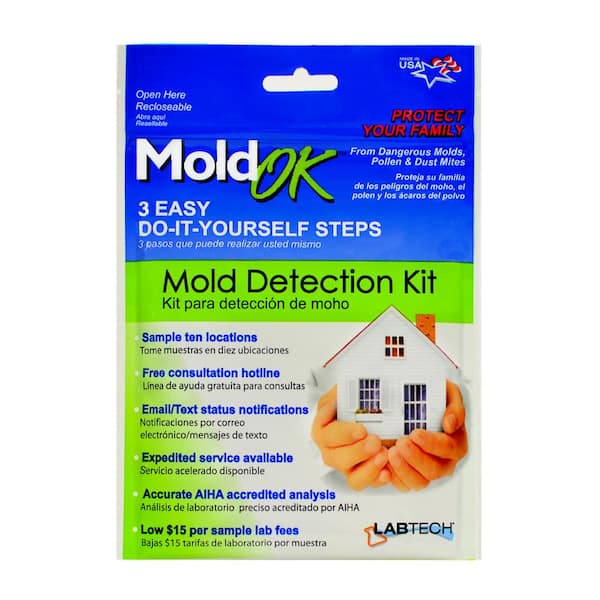Exactly How Mycotoxin Screening Aids Prevent Contamination and Protect Food Products

Mycotoxin testing is a vital practice in the food market, offering as a frontline protection against contamination by dangerous toxins created by mold and mildews. Via the application of sophisticated methods like High-Performance Fluid Chromatography (HPLC) and Fluid Chromatography-Mass Spectrometry (LC-MS), food producers can precisely measure and find mycotoxin degrees in agricultural products.
Comprehending Mycotoxins
Understanding mycotoxins begins with recognizing that they are harmful additional metabolites generated by particular mold and mildews, which can infect farming items. These metabolites are not crucial for the development or recreation of the fungis yet can have extreme effects for animal and human health and wellness. Mycotoxins are frequently discovered in staple crops such as corn, wheat, barley, and nuts, where they can proliferate under specific conditions of moisture and temperature.
There are numerous types of mycotoxins, each produced by various fungal varieties. Fusarium varieties create trichothecenes and fumonisins, both of which are associated with numerous severe and chronic wellness problems.

Risks of Mycotoxin Contamination
The dangers of mycotoxin contamination are complex, presenting considerable hazards to both food safety and security and public health and wellness. Mycotoxins, toxic substances produced by specific types of fungis, can contaminate a large range of farming products consisting of cereals, nuts, flavors, dried fruits, and coffee.
Economic influences are one more significant issue. Infected crops can cause substantial monetary losses for farmers and food manufacturers because of lowered yields and the requirement for pricey decontamination actions. Additionally, global trade can be substantially hindered as countries implement strict mycotoxin policies to shield their populaces, leading to declined deliveries and stretched trade connections.
Ecological factors such as climate change intensify the threat of mycotoxin contamination. Variants in temperature level and humidity can create beneficial conditions for fungal development, boosting the chance of contamination occasions. Thus, understanding and reducing these dangers are vital for ensuring the safety and integrity of global food supplies.
Methods of Mycotoxin Evaluating
Accurately identifying mycotoxin contamination in agricultural products is important for protecting public health and wellness and preserving food security requirements. Various methods are employed to detect and quantify mycotoxins, each offering details benefits and constraints.
High-Performance Fluid Chromatography (HPLC) is a commonly utilized method due to its high sensitivity and accuracy. It entails dividing mycotoxins from other substances in an example, making it possible for exact quantification. Similarly, Liquid Chromatography-Mass Spectrometry (LC-MS) combines fluid chromatography with mass spectrometry to offer comprehensive molecular information, making it specifically beneficial for determining multiple mycotoxins simultaneously - Mycotoxin testing Services.

Gas Chromatography-Mass Spectrometry (GC-MS) and Thin-Layer Chromatography (TENDER LOVING CARE) are additionally used, each with one-of-a-kind applications. GC-MS is effective for volatile mycotoxins, while tender loving care supplies a less complex, cost-effective choice for initial testing.
Advantages of Routine Evaluating
Regular testing for mycotoxins in farming products provides many advantages, significantly contributing to public health and food security. By determining contamination early, routine screening assists stop the circulation of poisonous foods, therefore reducing the risk of mycotoxin-related diseases among consumers. This proactive approach not only safeguards human health yet likewise enhances the total high quality of food supplies.
Regular screening also sustains regulative conformity. Various countries and areas have actually established stringent restrictions for mycotoxin levels in food and feed. Complying with these limitations through routine testing makes sure that producers and distributors fulfill legal standards, thereby staying clear of fines and trade barriers. Keeping conformity fosters customer depend on and brand reputation, which are essential for market browse around here success.
Furthermore, normal mycotoxin screening can lead to significant economic advantages. Early detection of contamination enables timely treatment, reducing prospective losses from prevalent contamination. Executing normal testing procedures can also lessen recall costs and associated responsibilities, which can be financially ravaging.
Additionally, routine screening supplies useful information that can inform much better farming practices and storage problems. By recognizing patterns of contamination, producers can embrace safety nets, thereby reducing future risks and contributing to the sustainability of the food supply chain.
Applying Testing Methods
Executing reliable mycotoxin screening methods is vital for guaranteeing the security and top quality of agricultural items. Each stage needs to be scrutinized to determine where mycotoxin contamination is most likely to occur.
As soon as vital control factors are recognized, choosing suitable testing methods is important. Common strategies consist of enzyme-linked immunosorbent assay (ELISA), high-performance liquid chromatography (HPLC), and mass spectrometry (MS) Each method has its strengths and weak points; thus, choosing the proper one relies on the certain mycotoxin being evaluated, the required level of sensitivity, and offered resources.

Finally, incorporating the screening procedures into a thorough food security management system is advisable. This boosts traceability and allows speedy restorative actions when contamination is spotted, thus protecting the integrity of the food supply chain.
Conclusion
Mycotoxin testing is essential in preventing contamination and safeguarding food products by making it possible for click to read more very early detection of damaging toxins produced by mold and mildews in farming products. Advanced methods such as HPLC and LC-MS ensure conformity with security policies and protect customers from wellness dangers. Regular screening improves brand reputation, economic stability, and rely on food safety by lessening contamination-related losses and preserving high standards in food manufacturing. Carrying out rigorous screening procedures is hence critical for the market's overall health.
Mycotoxin testing is a crucial practice in the food sector, serving as a frontline defense versus contamination by hazardous contaminants generated by mold and mildews. An incorporated technique including farming methods, storage administration, and regular testing like it can mitigate the risks linked with mycotoxin contamination, ensuring food safety and public wellness.
The threats of mycotoxin contamination are diverse, positioning significant threats to both food safety and public wellness.Routine testing for mycotoxins in agricultural products supplies many benefits, substantially contributing to public health and food safety and security.Mycotoxin testing is important in preventing contamination and safeguarding food products by allowing early discovery of damaging toxins generated by mold and mildews in farming products.